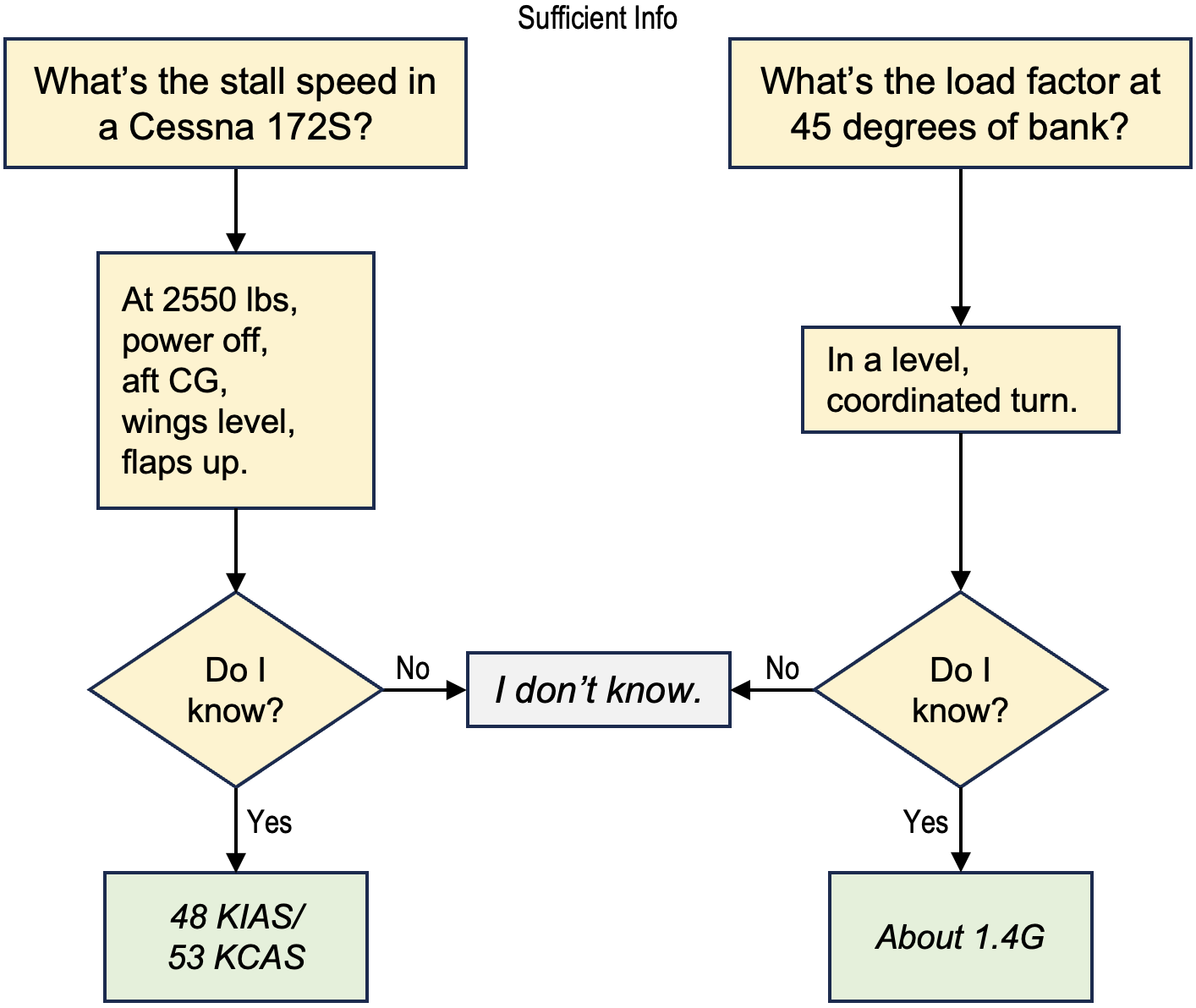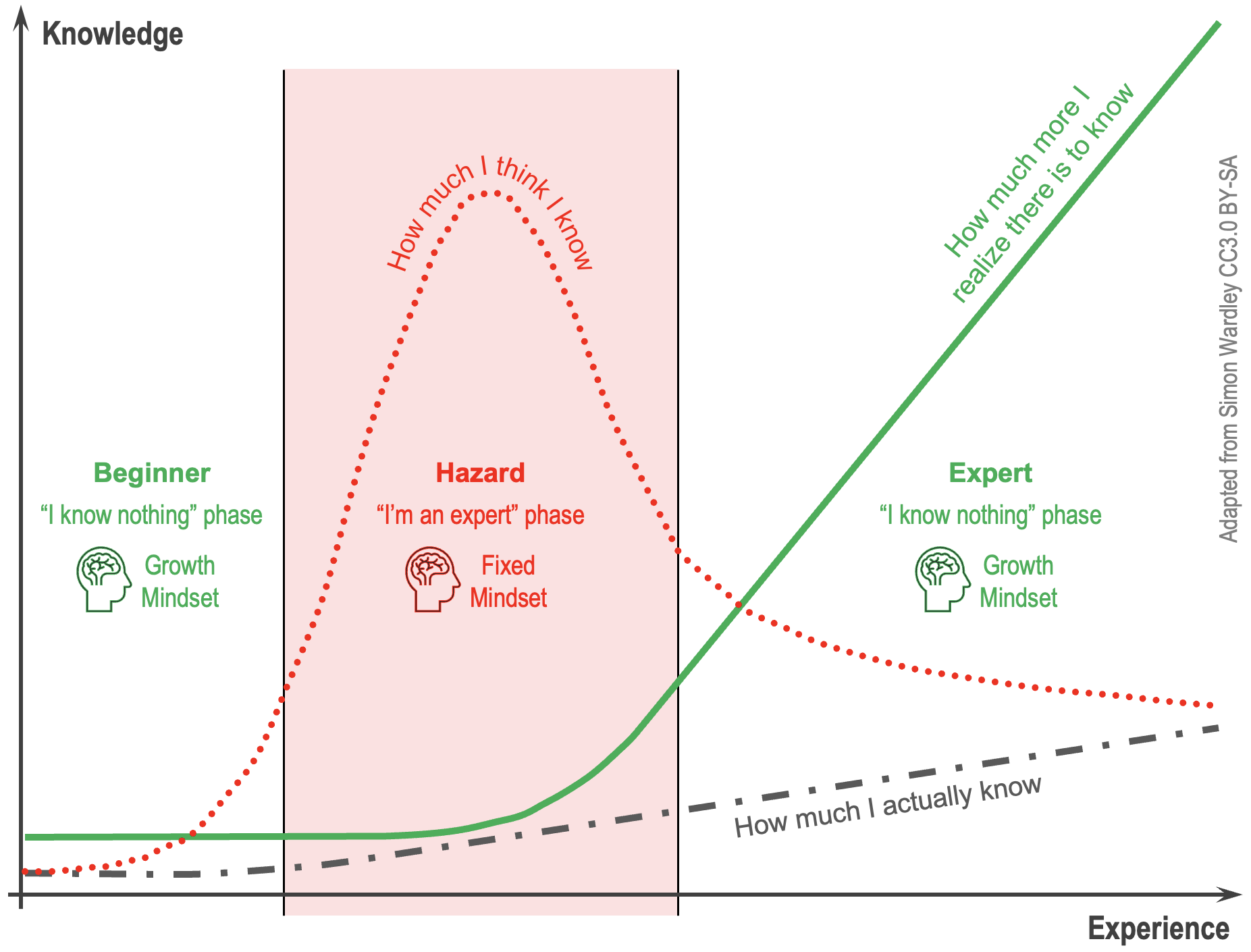Quick! What’s the stall speed of the airplane you fly?
If you’re like most, a number popped into your head. It’s a response conditioned by our training. But how do we reconcile that number with the phrase, “an airplane can stall at any airspeed”?
In Debrief to Win, Robert “Cujo” Teschner says, “by-far the most popular answer offered by an Instructor Pilot to any question is, ‘It depends.’ It also happens to be the truth, as there are few absolutes in extremely complex operating environments.”[1]

Because flying is complex, unqualified answers to many aerodynamic questions should be suspect. It’s why I wrote in Stall/Spin Awareness, “The PARE checklist concisely catalogs the elements needed to maximize the probability of recovering.”[2] Following even the best recommendation doesn’t guarantee spin recovery in all cases. Complexity is also why expert witnesses couch their conclusions in phrases like “more likely than not.”
Back to the question about stall speed. We need more information. What’s the airplane’s weight? What’s its configuration? What’s the G-load? With that we can pluck a speed from the range of possible stall speeds. Yet the answer applies only under the given conditions. Changing the conditions changes the answer. Context matters. And not just for stall speeds. Context also matters when talking about things like load factor.

Another common question is, “what will the airplane do if it stalls in a slip?” Surprise! It depends. High wing or low wing? Slipping along a straight track or while turning? Climbing or descending? An airplane in a slip might roll over the top at the stall. It might stay on track while bobbing in and out of stall buffet. Or it might begin a slipping spiral. We need to know the givens, the assumptions. Then we can provide a targeted answer based on practical experience.
This is the more decisive cousin of “I’m not sure.” Pilots—flight instructors included—are not required to be all-knowing. If you don’t know something, say so. If you’re an instructor, don’t bluff your way through a response. Table the question until you can find the answer from a reputable source.

A natural follow-up to “I don’t know” might be “teach me more.” This is a growth mindset. Admitting that we don’t know opens our minds to other possibilities. It pushes us to dig deeper. To gain more insight. To embrace the struggle of new learning. That learning can come from unexpected places, too. Training in Krav Maga, for example, led me to the nine principles of light airplane flying.[3]
“Beginner’s Mind makes it OK to wonder, fine to question, and acceptable not to understand.” – Michael Maya Charles, Artful Flying.
In contrast, a fixed mindset blocks new learning. The fixed mindset avoids challenges. Sees effort as a waste of time. Ignores useful feedback. Feels threatened by the success of others. It’s easy to slide into a fixed mindset when you lack confidence or compare yourself to others. It’s also normal to be anxious when stretching beyond your comfort zone. A good instructor will find ways to guide you through new learning. But watch out for the “expert” with a fixed mindset.

Usually, generally, typically, probably, tends to. These are the words and phrases of uncertainty. And they appear often in aviation. “Risk is a state of uncertainty.”[4] Managing risk is about weighing probabilities, which are between zero and 100 percent.
For instance, the weather at my destination is marginal. What’s the probability that it won’t drop below minimums? The engine has been running rough lately. What’s the likelihood that it won’t suffer a malfunction en route? My skills are rusty. How likely is it that I’ll be able to land there safely given the gusty crosswind?

Consider the turnback after total engine failure on takeoff. Have you calculated the minimum turnback altitude factoring in the current conditions? Density altitude, wind, runway length and surface condition, airplane performance, your level of proficiency. Or will you rely on a generic rule of thumb? What is the likelihood that the engine will fail when you’re within the narrow turnback window? What is the likelihood that you can execute the maneuver while stressed? What will you do if the engine quits below or above the turnback window?
A data point: “If an engine failure after takeoff results in an accident, the pilot is at least eight times more likely to be killed or seriously injured turning back than landing straight ahead.”[5]
Also beware hazardous attitudes and biases. These can cloud your judgment and lead to black-and-white thinking. For instance, “nothing bad will happen.” The flight environment is too complex, too dynamic to be 100 percent sure about anything. It’s a gray scale.
Accept that flying involves uncertainty. Develop your aeronautical decision-making skills. Use risk management tools to help with go/no-go/divert decisions. Use “it depends” and “I don’t know” to open doors to new and deeper learning opportunities.
——
[1] Robert “Cujo” Teschner, Debrief to Win, (Chesterfield, MO: RTI Press, 2018), 145.
[2] Rich Stowell, The Light Airplane Pilot’s Guide to Stall/Spin Awareness, 2007, 274.
[3] Krav Maga is a principles-based Israeli martial art.
[4] Uncertainty. (2023, November 18). In Wikipedia. https://en.wikipedia.org/wiki/Uncertainty
[5] Transport Canada, An Evaluation of Stall/Spin Accidents in Canada, TP 13748E, 1999, 10.
>> This post was written by a human <<
Sign up to receive an email whenever Rich Stowell publishes content